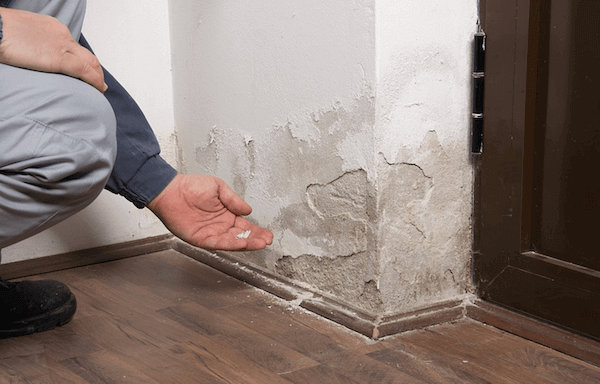The content below involving Ways to Reduce The Risk Of Fire And Water Damage is pretty much compelling. You should take a look.
Water gives life, water invasion on components where it's not meant to be can result in damage. It can peel off away surface areas as well as wear down the foundation if the water saturates into your structure. Mold and mold likewise flourish in a damp environment, which can be dangerous for your health. Houses with water damages scent musty and also old.
Water can originate from lots of resources such as hurricanes, floods, burst pipelines, leaks, and sewer issues. In case you experience water damage, it would be great to understand some safety precautions. Here are a few standards on exactly how to deal with water damage.
Do Prioritize House Insurance Policy Protection
Water damages from flood because of heavy winds is seasonal. However, you can likewise experience a sudden flood when a faulty pipeline unexpectedly bursts into your home. It would be best to have residence insurance policy that covers both acts of God such as all-natural disasters, as well as emergencies like broken plumbing.
Do Not Forget to Shut Off Utilities
In case of a calamity, particularly if you stay in a flood-prone location, it would be advisable to turn off the primary electrical circuit. This cuts off power to your entire house, avoiding electrical shocks when water comes in as it is a conductor. In addition, don't neglect to switch off the main water line shutoff. When floodwaters are high, furnishings will move as well as create damage. Having the primary valve shut down avoids additional damages.
Do Remain Proactive and Heed Weather Condition Signals
Listen to evacuation warnings if you live near a river, lake, or creek . Doing so decreases potential residential or commercial property damage.
Do Not Disregard the Roof
You can prevent rainfall damages if there are no holes and leakages in your roof covering. This will certainly protect against water from flowing down your walls and also soaking your ceiling.
Do Pay Attention to Little Leaks
A burst pipeline does not take place overnight. Usually, there are red flags that suggest you have actually damaged pipes in your house. You may discover bubbling paint, peeling wallpaper, water touches, water spots, or leaking sounds behind the walls. Eventually, this pipe will rupture. Preferably, you should not await things to intensify. Have your plumbing repaired before it leads to enormous damages.
Don't Panic in Case of a Ruptured Pipeline
Keeping your clearheadedness is crucial in a time of situation. Due to the fact that it will stifle you from acting fast, stressing will just intensify the issue. When it concerns water damage, timing is crucial. The longer you wait, the more damage you can anticipate. Thus, if a pipeline bursts in your home, right away shut off your primary water valve to cut off the source. Then unplug all electric outlets in the area or switch off the circuit breaker for that part of your home. Call a reputable water damages reconstruction expert for support.
Water gives life, water breach on components where it's not meant to be can result in damage. Residences with water damages smell old and also mildewy.
Water damage from flooding fees to hefty winds is seasonal. You might discover gurgling paint, peeling wallpaper, water touches, water spots, or trickling audios behind the walls. When it comes to water damages, timing is crucial.
Some Do's & Don't When Dealing with a Water Damage
DO:
Make sure the water source has been eliminated. Contact a plumber if needed. Turn off circuit breakers supplying electricity to wet areas and unplug any electronics that are on wet carpet or surfaces Remove small furniture items Remove as much excess water as possible by mopping or blotting; Use WHITE towels to blot wet carpeting Wipe water from wooden furniture after removing anything on it Remove and prop up wet upholstery cushions for even drying (check for any bleeding) Pin up curtains or furniture skirts if needed Place aluminum foil, saucers or wood blocks between furniture legs and wet carpet Turn on air conditioning for maximum drying in winter and open windows in the summer Open any drawers and cabinets affected for complete drying but do not force them open Remove any valuable art objects or paintings to a safe, dry place Open any suitcases or luggage that may have been affected to dry, preferably in sunlight Hang any fur or leather goods to dry at room temperature Punch small holes in sagging ceilings to relieve trapped water (don't forget to place pans beneath!); however, if the ceiling is sagging extremely low, stay out of the room and we'll take care of it DO NOT:
Leave wet fabrics in place; dry them as soon as possible Leave books, magazines or any other colored items on wet carpets or floor Use your household vacuum to remove water Use TV's or other electronics/appliances while standing on wet carpets or floors; especially not on wet concrete floors Turn on ceiling fixtures if the ceiling is wet Turn your heat up, unless instructed otherwise

I am just very fascinated with 5 Home Safety Tips To Reduce The Risk Of Fire And Water Damage and I'm hoping you enjoyed reading the entire blog entry. Appreciated our entry? Please share it. Let someone else check it out. Thanks a lot for taking the time to read it.